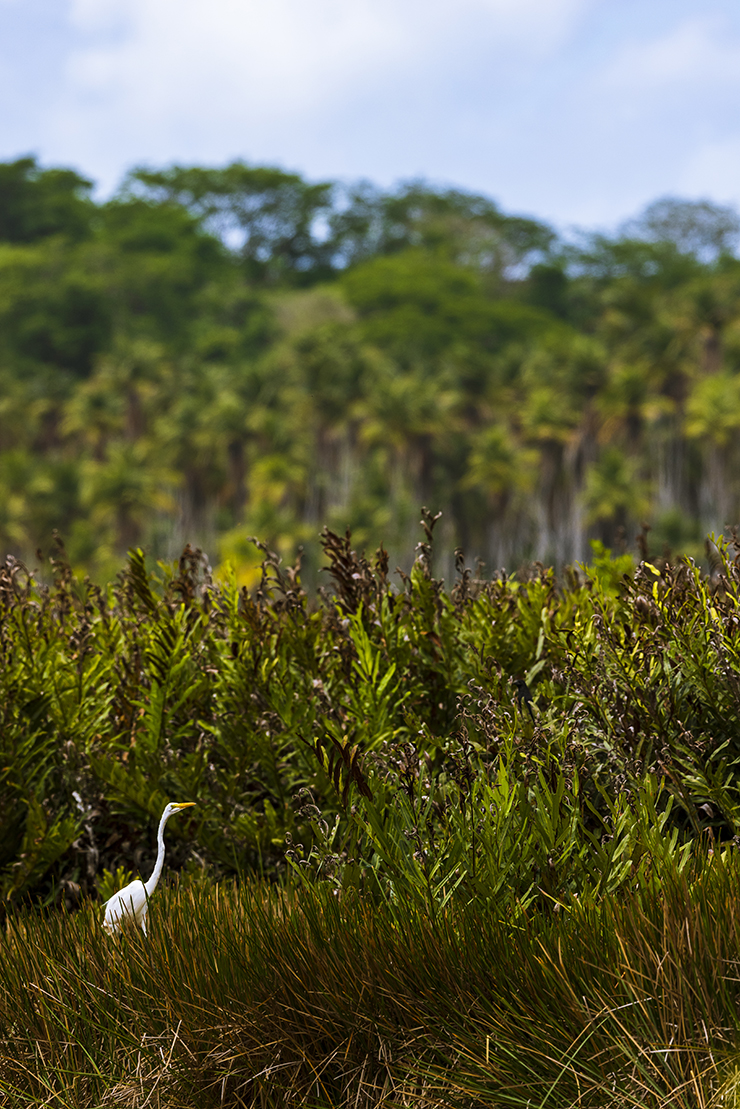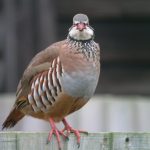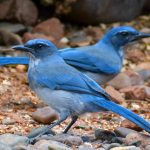
One of the interesting aspects of Trinidad’s nature is that both southern corners of the roughly boot-shaped island are dotted with wetlands. Some weeks ago, I elaborated on some of my experiences on the eastern and southeastern ends. Recently we took a more social drive to the opposite southern corner, to the very end of the island where the ocean is gradually reclaiming land, road and all. Here too, the forest is interspersed with marshy habitat, and in some places considerably sized bodies of water.
Trinidad’s southwestern peninsula has pockets of wet savanna that support sizeable groves of moriche palm. As such, the area is one of the best places to catch a glimpse of a Red-bellied Macaw or two. These small macaws don’t show their namesake red bellies often, but with yellow faces and blue flight feathers they are still flashy little birds.

One of two Red-bellied Macaws that made a close pass while we had breakfast on a remote access road through the forest.
The mangrove swamps on the very end of the peninsula are similar in some ways to those on the opposite end. While we were there, a pair of Rufous Crab Hawks noisily protested the presence of a Common Black Hawk that was comfortably perched in the vegetation. Eventually, the pressure mounted and the supposed interloper departed. Nearer to the road, a Spotted Tody-flycatcher was busy building a nest. A Cocoi Heron flew over, presumably looking for a place to mount the classic sit-and-wait but instead found human observers. It aborted its mission with an awkward bank over the treeline. Sometimes Scarlet Ibis can be seen here as well, but there were no bright red splotches among the mangrove roots and branches this time.

A Tricolored Heron stalked the dark waterways.
The Icacos Lagoon is a magnificent spectacle even without considering its wildlife. Hundreds of people visit here each year, many of which are locals in awe of the landscape and committed to several hours in a vehicle. From Port of Spain, the journey can take approximately three hours. Nevertheless, it is beyond refreshing to behold the unbroken wind over expansive wetland bordered by millions of coconut trees. On the rare occasion where there is no wind, the lagoon quiets and creates a near impeccable reflection.

Birds are of course, plentiful here. If you don’t see at least one Great Egret while here, you’re probably having a less than average day and should self-prescribe an ice cream.

Four juvenile American Flamingoes were a welcome surprise. Another Great Egret found itself in the frame eventually, and unsettled the flamingoes who were resting quietly.

Eagle eyes found this Pinnated Bittern in the reeds.

Another fairly large denizen of this area, Cocoi Herons still require some degree of luck to encounter. Despite their size and imposing stature, they are skittish and tend to be among the first to disappear.
The only downfall of this picturesque location is the fact that there is very little shade, and with the sun climbing to near-overhead the heat can easily range between oppressive and debilitating. For those interested it is highly recommended to make the necessary sacrifices to get there for sunrise!













Great photo of a Tricolored Heron, and another location to put on my birding wish list …
Thanks, Kai. I don’t mind swapping locations for a week or two!
That locations swapping for a week or two sounds like an idea!